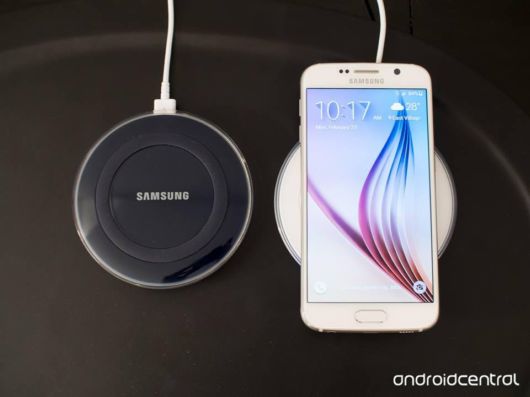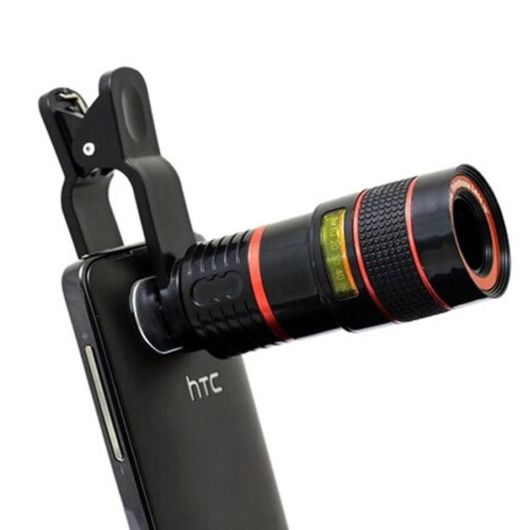Smartphones have revolutionized the world in so many different aspects, from the ease of communication and accessibility, to the world of applications, which have turned our phones into a multitude of tools. Of course, this technology is continuously improving and becoming even more refined. Although smartphones have facilitated your needs extensively, there are some extremely useful things you might still be overlooking about its system functions and customizations, such as taking a screenshot with your phone, having text displayed larger or read out to you.
The following tips come with instructions on how to use them on both Android phones and iPhones.
1. Take a screenshot 
You can easily take a screenshot on a computer, but if you didn’t know about this smartphone function, you’re about to discover that it isn’t any more difficult to dothis on your phone! Use this when you want to quickly share something you’ve received (such as a text message) or something you’ve seen on social media.
iPhone instructions:
Press and hold the Home button WITH the Sleep/Wake button (simultaneously).
When the screenshot is taken, you will hear a shutter click.
The screenshot will be automatically saved in your Camera Roll or Saved Photos Selection.Android instructions:
Press and hold the Power button WITH the Volume Down button (simultaneously).
You should hear a sound and/or see a flash on your screen,when the screenshot is taken.
The screenshot will be automatically saved in the Captured Images folder in Gallery,
2. Block calls and texts 
If you’re getting bothersome phone calls or texts, your smartphone gives you the possibility to block these from reaching your phone. This is done through a simple setting you can change whenever you like.
iPhone instructions (iOS 7 or later):
For calls:
If the caller is on your phone’s contact list, find the contact in your list and tap on his name. Scroll to the bottom of the page and select Block This Caller. Then tap Block Contact.
If the caller isn’t on your phone’s contact list, tap on the Info button next to the number, scroll to the bottom of the page and select Block this Caller. Then tap Block Contact.For texts:
- Whether the person is on your contact list or not, open the Messages app and select a message received from this person (if you have more than one, pick any). Tap Contact in the upper right of the screen and tap the Info button. Scroll to the bottom and tap Block this Caller, followed by Block Contact.
Editing blocked contacts:
- Go to Settings > Phone > Blocked – (for callers).
- Go to Settings > Messages > Blocked – (for text senders).
- Go to Settings > FaceTime > Blocked – (for FaceTime contacts).
Android instructions:
- Open Settings and tap Call Settings, followed by Call block. Under Incoming Calls, find Call Block List, and tap Create.
- Enter the number you would like to block, or select it from your contact list or call log.
3. Use a real password instead of a digit code 
The default way of unlocking a phone from the lock screen is by using a 4-digit PIN. As long as it is not super easy and obvious, this is a pretty safe system. But to make it even more secure, you can change this to a set string of characters of your choice, making it more like a password.
iPhone instructions:
Enter Settings, and go toPasscode. Swipe off the option that says Simple Passcode.
Now you can set your passcode to any combination of characters.Android instructions:
Enter Settings, and go to Screen lock. Here, you can select which level of security you want from the options.
Tap Password and create the password you want, using any characters.
4. Enlarge text 
Sometimes, it can be difficult to read what’s on your phone’s screen, especially if your phone is quite small. Resolve this issue by setting the font size of your phone to a larger or bolder one, so it is easier for you to read.
iPhone instructions:
Enter Settings, select General, followed by Accessibility. Turn onBold Text and/or Larger Text, according to your preference.
If you select Bold Text, you will need to restart your phone for the setting to be activated.Android:
Go to Settings, then select Accessibility. Under Vision, select Font Size and set it to Large.
Certain smartphones even offer the option of setting the size toHuge, which is bigger than Large.
5. Read texts out loud 
Did you know your smartphone is also able to read things out to you? When you don’t feel like reading, you are not in a position to do so, or perhaps have sight problems, this feature might come in handy for you.
iPhone instructions:
Enter Settings, followed by General and Accessibility. Turn onVoiceOver.
Once you do this, you will have the option to practice with VoiceOver, so that you customize the way things are read to you so it’s easy and practical for you.
When you start using VoiceOver, you can drag your fingers around the home screen to have the names of the apps read out to you (by tapping once). You can enter the respective apps by double tapping on them. You can use VoiceOver while using Maps to have the directions read out to you, while using Camera to know the number of people in your shot, and in photos to listen to a description of the pictures.Android instructions:
Enter Settings, followed by Accessibility and TalkBack. (Note: If you don’t find this, download it from the Google Play Store). Turn on TalkBack.
This will enable your phone to read to you whatever you touch on the screen. From then after, you will need to use 2 fingers to swipe the screen normally.
To customize the TalkBack settings (such as the speed rate of the voice), go to Settings, followed by Accessibility and Text-to-Speech options.
You can also enable another setting to have your phone tell you who is calling or messaging you, at the moment a call or message is received. To activate it, go to Settings and turn onHands-free mode.
6. Customize alert vibration patterns 
With your smartphone, you can not only customize the way your device rings when it’s on normal mode – you can even customize the way it vibrates when it’s on silent mode. You can do this by choosing specific vibration patterns through the setting provided by your phone.
iPhone instructions:
Enter Settings. Go to Sounds, followed by Ringtone, thenVibration. Here, you can create patterns of vibration by tapping.
You can even create a customized vibration pattern for specific contacts. To do this, select the contact you want from your list of contacts, tap Edit and select the Vibration option.Android instructions:
Go to your contact list and tap on a contact name. UnderVibration Pattern, tap Default and choose a preset pattern.
If you want to create your own pattern, tap Create and tap on the screen to make it.
7. Camera LED flash for notifications 
Instead of using vibrate, your smartphone gives you the option to set the camera’s LED light to flash every time a notification comes in.This way, in silent places you can be notified of your phone calls,messages and app notifications efficiently without a sound.
iPhone instructions:
Enter Settings, then tap General, followed by Accessibility. Turn on LED Flash for Alerts.Android instructions:
Enter Settings, then tap Accessibility. Turn on Flash notification.
8. More comfortable way of taking pictures 
With now larger devices and touch screens, taking pictures can sometimes be a bit difficult if you’re using the shutter button on the screen, especially when you’re using the rear camera of the phone. Instead of tapping on the screen to capture the picture, iPhones and Android phones both have a much more comfortable way of doing this.
iPhone instructions:
When you’ve opened the Camera app, press the Volume Up button to take a picture. This applies for both rear and front camera capturing.Android instructions:
Many Android phones come with the option of using the Volume buttons at the side of the device to capture a photo while on the Camera application. This applies both for rear and front camera capturing.
Alternatively, open the Camera app and tap Settings. Scroll down to Voice Control and turn it on. You will now be able to take photos on saying the commands "Capture", "Shoot", "Smile" and "Cheese".
9. Take multiple photos at once 
When you’re taking photos of moving objects, such as kids, animals, cars, etc., you might find this feature to be useful. You can now take several photos at one go, to make sure you have a selection of photos to choose the best from.
iPhone (5 or later) instructions:
Enter the Camera app. Tap and hold the capture button on the screen, or press and HOLD the Volume Up button on the side of the phone. The phone will keep on taking multiple photos for as long as you hold the button. (iPhones can take up to 10 photos per second)
All the photos will be saved in Camera Roll. They will be grouped together automatically, so you can choose the best ones from the batch.Android instructions:
Enter the Camera app and tap Settings. Turn on Burst Shot.Now, you can tap and HOLD the capture button on the screen or the volume button from the side of the phone, to take multiple photos at one go. The phone will keep on doing this for as long as you hold the button, or depending on the preset limit for yourphone, if there is one.
All the photos will be saved in the Gallery, often grouped together.
10. Turn off music automatically 
Some of us use our phone’s music to accompany them while working on a task, or even in bed before going to sleep. The problem is, your phone’s battery is bound to be drained quickly while playing, especially if it ends up unnecessarily playing for the rest of the night if you fall asleep. Avoid this from happening by setting a timer for your music player.
iPhone instructions:
Enter the Clock app and tapTimer. Select When Timer Ends. Scroll to the bottom of the screen and tap Stop Playing. Here, you can set the settings for your timer.
Android instructions:
Enter the music player and go to Settings. Tap Music Auto Off. Here you can set how long you want your music play for.
You may even download apps such as Sleep Timer to customize this.

























